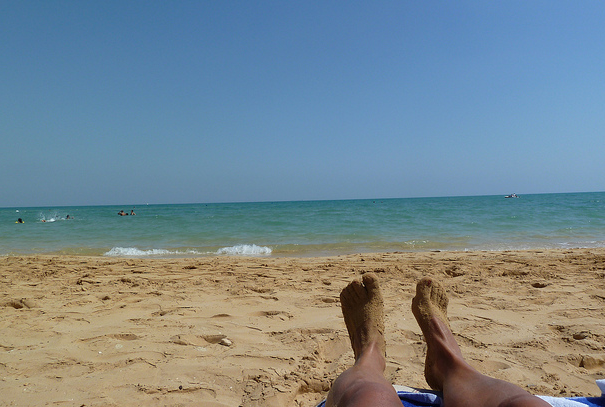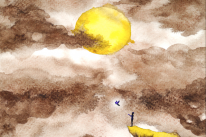
“The time to relax is when you don’t have time for it.” ~Sydney J. Harris
Have you ever been “insanely busy”?
That’s been my world for the last two weeks. Not only have I been writing posts for my websites and creating meditation products for my subscribers, I’ve also been busy planning the end of year music events at the school where I work.
During this time I discovered something that helped me stay on top of things and keep my productivity high: I started making appointments to do nothing. Sometimes I scheduled this time at work, sometimes at home.
If I’m struggling to write posts, articles, or plan music workshops, I find that allowing myself time to do nothing and let my mind unravel brings many benefits. The main ones are creating new ideas and finding solutions to problems that have been unsolved for a while.
Doing nothing feels like the complete opposite of being productive, but after you’ve tried it you will see how effective it can be. Why do you think Google adopts a company policy that has an emphasis on allowing their staff so much free time?
A lot of people say that they are too busy to do nothing. Yet those same people will happily invest hours in front of the television, or spend plenty of time fretting and worrying about something without allowing themselves the pleasure to just be.
I’ve noticed that an hour slumped in front of the TV feels very different than one hour sitting in the park.
Actually, doing nothing can be a great investment into your personal well-being and something worth making time for.
It doesn’t take a huge change in your lifestyle—perhaps just a change in your thinking—and once you experience the benefits you will be more likely to make it a regular part of your schedule.
I have two preferred methods for doing nothing, and they can both be of great benefit.
The first way is to forget feeling guilty and to just take the time to zone out. Unplug from the internet for a while, stare out of the window, or just into space, and luxuriate in a special time of doing nothing.
It’s important not to try and do stuff while you’re doing nothing. No reading of letters, catching up on emails, or even listening to the radio. Try to disconnect for some replenishment of the soul.
If possible do nothing alone. With others around, it’s always tempting to start chatting instead of allowing a stillness and detachment to enfold you. Think hot bubble baths and scented candles.
The second way is to enter a similar relaxed state, but to allow an active awareness of everything around you.
Although there is a bit more effort involved in this kind of doing nothing, with a bit of practice it becomes quite natural. This sort of state will leave you fully relaxed but also revitalized to the point where you feel energized to dive back into an activity again.
This type of doing nothing is similar to meditation, but you don’t have to think of it that way unless it helps. Just as in meditation, by focusing on your breathing as you sit comfortably doing nothing, you will find that your body begins to relax.
There is a circular connection between your breath, body, and mind, and anything that affects one of these things ends up affecting all three.
Start by getting into a comfortable and still sitting position and begin to slow your breathing, making each breath as full as possible. Allow the breath in through your nose and feel your belly expand as your lungs fill. By gently squeezing your belly on the out-breath you will find that your next deep in-breath happens all by itself.
As you sit comfortably, doing nothing, begin to notice all of the physical sensations in your body. Try to be still as you do this, without any fidgeting or restlessness. Now start to become aware of the contact of your body with the chair you’re sitting on, with your feet with the ground, or the feel of the clothes on your skin.
After a short time, turn your attention to your thoughts. Become an observer of each of them as they emerge into your consciousness; watch them until each one disappears and is replaced with another one.
You might start to feel that there are no thoughts in your head. This is another thought for you to simply observe.
Become the watcher of this procession of thoughts, this consciousness stream, and marvel at the range of memories, ideas, images, and opinions that come up.
With practice at this, almost by working at your doing nothing, you will find that the train of thoughts actually slows down. After some time gaps will appear between thoughts. This is the emptiness that Buddha spoke of, the natural condition of the mind.
It takes a while to master this, but it’s a great justification for doing nothing. As the emptiness between thoughts increases you will find that you develop a richer awareness of the world around you and also a great serenity. Next, you will find ideas and solutions begin to pop into your head almost automatically.
So the next time that you sit down to do nothing, become aware of this great opportunity—and enjoy every minute of it.
Photo by uliatcairo
About Craig Coggle
Craig Coggle is a musician, meditator, and writer of Meditation for the Modern Mind. You can read more about doing nothing and other awesome tools for skillful living at his blog http://21stcenturymonk.net.












 Though I run this site, it is not mine. It's ours. It's not about me. It's about us. Your stories and your wisdom are just as meaningful as mine.
Though I run this site, it is not mine. It's ours. It's not about me. It's about us. Your stories and your wisdom are just as meaningful as mine.